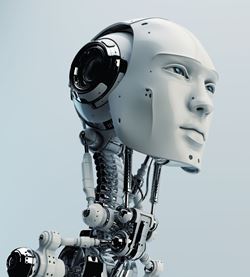Facebook AI has announced a new collaboration with Matterport that will advance Habitat, a simulation platform for research in Embodied AI, to help robots better interact with the physical world.
Through the partnership, spatial data company Matterport will make the largest ever dataset of 3D indoor spaces available for academic, non-commercial uses.
The Habitat-Matterport 3D Research Dataset (HM3D) is a collection of 1,000 high-resolution Matterport digital twins made up of residential, commercial, and civic spaces generated precisely from real-world environments.
A digital twin is a virtual, real-time representation of a physical object or process.
HM3D aims to advance embodied AI research, which seeks to teach robots and virtual AI assistants to understand and interact with the complexities of the physical world.
“Until now, this rich spatial data has been glaringly absent in the field, so HM3D has the potential to change the landscape of embodied AI and 3D computer vision,” said Dhruv Batra, research scientist at Facebook AI Research. “Our hope is that the 3D dataset brings researchers closer to building intelligent machines, to do for embodied AI what pioneers before us did for 2D computer vision and other areas of AI.”
HM3D is a step towards helping robots navigate real-world environments, better understanding the variations of spaces such as bedrooms, bathrooms, kitchens and hallways, as well as the different configurations of those rooms within every structure.
It can also assist robots in recognising how objects within rooms are typically arranged so that instructions are correctly understood.
The research could one day be used in production applications like robots that can retrieve medicine from a bedroom nightstand or AR glasses that can help people remember where they left their keys.
“We are excited to collaborate with Facebook as we provide the academic and research communities access to this unique spatial dataset that is sure to impact how we work and live,” said Conway Chen, vice president of business development and alliances at Matterport. “With more than five million spaces captured with the Matterport platform, we are the only company that can offer a diverse library of high-resolution, data-rich digital twins of various styles, sizes, and complexities from across the world."
Chen added: "HM3D can also be used more broadly by academia, and we can’t wait to see what innovations emerge.”
Yasutaka Furukawa, associate professor of computing science at Simon Fraser University, said that the market has been challenged with a lack of spatial data to advance innovation in real-estate, construction, robotics, and augmented reality.
“But with the HM3D dataset from the collaboration between Matterport and Facebook AI, we're excited about the significant progress we'll make in advancing research in indoor scene reconstruction, generation, and analysis at a house-scale for the first time," added Furukawa.
Latest News
-
Reddit ‘challenges Australia’s under 16s ban’ with lawsuit
-
BBVA expands ChatGPT to 120,000 employees
-
BIS and Central banks test post-quantum cryptography in payments
-
UK government launches new MedTech qualifications to fight skills gap
-
UK scientists get priority access to advanced AI through Google DeepMind lab
-
Uber Eats rolls out robot couriers in Leeds
The future-ready CFO: Driving strategic growth and innovation
This National Technology News webinar sponsored by Sage will explore how CFOs can leverage their unique blend of financial acumen, technological savvy, and strategic mindset to foster cross-functional collaboration and shape overall company direction. Attendees will gain insights into breaking down operational silos, aligning goals across departments like IT, operations, HR, and marketing, and utilising technology to enable real-time data sharing and visibility.
The corporate roadmap to payment excellence: Keeping pace with emerging trends to maximise growth opportunities
In today's rapidly evolving finance and accounting landscape, one of the biggest challenges organisations face is attracting and retaining top talent. As automation and AI revolutionise the profession, finance teams require new skillsets centred on analysis, collaboration, and strategic thinking to drive sustainable competitive advantage.
© 2019 Perspective Publishing Privacy & Cookies











Recent Stories